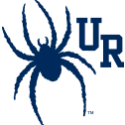Definitions 10/10/2017
Definition of Domain : Given the function we say that the domain of f is the set
.
As we discussed today in class the domain is not simply all the values that your function can take in but rather all the values that you decide your function will take in.
Definition is the limit-
means that for all
we can find a
such that whenever
, it follows that
.
An important part of the definition to note is the part that states for all we can find a
. This line implies that there is a different value of
for each value of
which is why in class today we had to find
in terms of
in order to complete this proof.
Definition 4.2.1 – Let , and let
be a limit point of the domain
. We say that
provided that, for all
, there exists a
such that whenever
(and
) it follows that $\mid f(x) -L \mid < \epsilon$.
It is interesting to note the difference between the standard definition for functional limits and the definition for as the limit. This difference is due to the fact that mathematical operations are still not well defined when using
. The last part of the standard definition of functional limits uses the expression
. We would not want to use this expression where
if we are attempting to rigidly prove that a limit equals
when we cannot even properly define
.
Theorem 4.2.3- Given and limit point
, the following statements are equivalent.
i)
ii) For all sequences such that
, it follows that
.
Since i and ii are equivalent this theorem is used to to define the divergence criterion for functional limits. Mainly the divergence criterion utilizes ii. It says that if two sequences and
exist for a function
such that
(and c is a limit point),
and
but if
we can say
does not exist. Here we see the usefulness of Theorem 4.2.3 because it allows us to split
into two requirements that we can then use to define divergence for functional limits.

Thank you for the exploration of concepts covered in class, Abe. Good blog post.